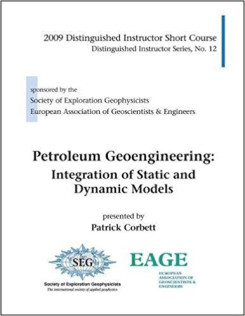Petroleum Geoengineering: Integration of Static and Dynamic Models
Petroleum Geoengineering: Integration of Static and Dynamic Models explores improved linkage among techniques used at various scales to describe and model petroleum reservoirs. The book, which accompanies the 2009 SEG/EAGE Distinguished Instructor Short Course, is aimed at a broad range of geoscientists and engineers working in the petroleum industry. The ultimate objectives are to enable technical staff members to maximize the recovery of hydrocarbons. The impact of petrophysical heterogeneity at various scales on the recovery of oil and gas provides the focus for the book.
The integrated nature of the book makes it suitable for people from all subsurface disciplines (geology, geophysics, petrophysics, geomodeling, and reservoir and petroleum engineering). Petroleum Geoengineering is also very suitable for directing teams of subsurface staff members.
- Genre: All Books, Flow Simulation
Cast & Characters
| 1-6 | Author’s Perspective and Geoengineering Context |
| 7-8 | Background to Geoengineering |
| 9-12 | Definition of Geoengineering |
| 13-24 | The Geoengineering Challenge |
| 25-42 | Core Skills of a Petroleum Geoengineer |
| 43-60 | Examples of Petroleum Geoengineering |
| 61-62 | The Future for Petroleum Geoengineering |
| 63-68 | World Oil Reserves and the Potential Prize for Global Petroleum Geoengineering |
| 69-72 | Conclusions |
| 73-78 | Appendix A Exercise 1: An Upscaling Example |
| 79-84 | Appendix B Exercise 2: Reservoir Management |

